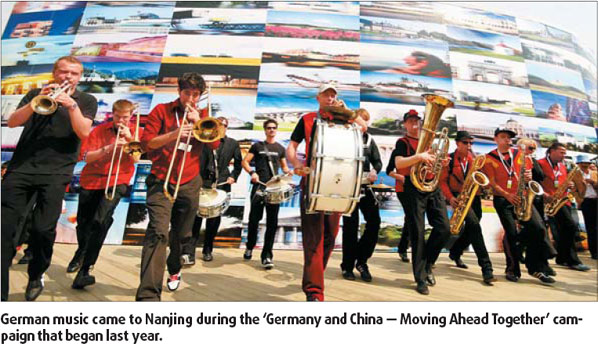Burgeoning cities generate increasing global pressure

The increasing pace of urbanization and the need for sustainable development are among the biggest challenges of the modern world, and increasingly important in China, a developing country with a number of rapidly sprawling cities.
The "Germany and China - Moving Ahead Together" campaign now in Chongqing is further pushing communication and cooperation between the two countries to share ideas about a sustainable future.
The need is illustrated by population growth in cities over the past 200 years. In 1800, urban areas were home to 5.1 percent of the global population. By 1900 it had reached 13.3 percent and by 1950, 28.9 percent of all people in the world lived in urban areas. At the end of last year more than half of the global population was living in cities.
Even though pollution, traffic, crime, poverty and a range of other problems are part of city life, urbanization is a trend that is here to stay.
The world's urban population will reach 5 billion by 2030 and planners say the process will continue to the end of the 21st century.
In the 30 years since its reform and opening up, China has witnessed an annual population increase of 10 million people, with the ratio of city dwellers increasing to 43.9 percent in 2006 from 17.9 percent in 1978. It is estimated that the urbanization level in China will accelerate another 50 percent by 2013. Seventy-five percent of the country's population will live in cities by 2050 as the urban population increases by 13 million each year.
As city dwellers well know, urbanization has advantages and disadvantages. Cities promote production and efficiency and bring a new look to China, yet they carry with them problems like voracious demands for energy, ecological damage, pollution, unemployment, poverty and a rising income gap with rural regions.
Due to differences in history, culture and political institutions, the process of urbanization is different in various countries. Keeping Chinese characteristics is one of the key national strategies in China's development.
Germany is a developed country with a population of 82 million. It began its industrialization process in the middle of the 19th century and followed the path to industrialization and urbanization for the next 70 years. By 1892, the urban population in Germany had already surpassed that in rural areas, continuing until urbanization reached 87 percent by 2003.
Over the past 60 years, Germany has accumulated wide experience in urban planning, reforestation, river management and other approaches to meeting environmental and population challenges.
Advanced urban planning concepts and technology from Germany could prove beneficial to China to learn, organizers of the three-year German initiative say.
The issue will also be addressed at the Shanghai Expo to be held in 2010 - its theme is "Better City, Better Life."
(China Daily 05/09/2008 page19)














